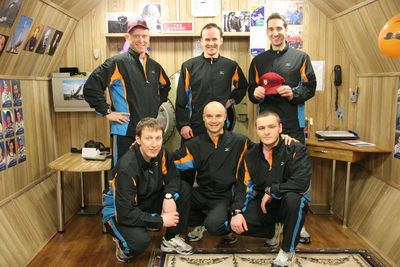[/caption] Six crewmembers emerged from 105 days of isolation on Tuesday, completing a simulated Mars mission. This experiment was the first phase of the Mars 500 program to help understand the psychological and medical aspects of long spaceflights. "We have successfully completed our mission," said crew member Oliver Knickel. "This is a big accomplishment that I am very proud of. I hope that the scientific data we have provided over the last months will help to make a mission to Mars possible."
The simulated mission began on March 31 of this year. Inside the isolation facility in Moscow, Russia the crew participated in a range of scenarios as if they really were traveling to the Red Planet – including launch, the outward journey, arrival, transfer to and from the Martian surface, simulated emergencies, and finally the long journey home.
All communications with anyone outside the facility had a delay of up to 20 minutes each way, just as a real mission to Mars would have. The only thing missing was microgravity during the simulated flight and one-third of Earth's gravity during the simulated time on Mars. Plus, of course, the crew never faced any of the real dangers of launch, spaceflight, landing or living on a planet hostile to human life.
The crew includes Knickel, a mechanical engineer in the German army, Cyrille Fournier, an airline pilot from France and four Russians: cosmonauts Sergei Ryazansky (commander) and Oleg Artemyev, Alexei Baranov, a medical doctor, and Alexei Shpakov, a sports physiologist. [caption id="attachment_28359" align="aligncenter" width="400" caption="An external view of the Module for Mars 500 Image Credit: ESA"]
[/caption] The crew grew some of their own food to supplement the usual space-style pre-packaged meals. Any spare time was spent reading, watching films and playing music and games together.
"We had an outstanding team spirit throughout the entire 105 days," said Cyrille Fournier. "Living for that long in a confined environment can only work if the crew is really getting along with each other. The crew is the crucial key to mission success, which became very evident to me during the 105 days."
This initial 105-day study is the precursor to a complete simulation of a fully-fledged mission to Mars and back due to start in early 2010. That exercise will see another six-member crew sealed in the same chamber to experience a complete 520-day Mars mission.
Source:
ESA
 Universe Today
Universe Today
